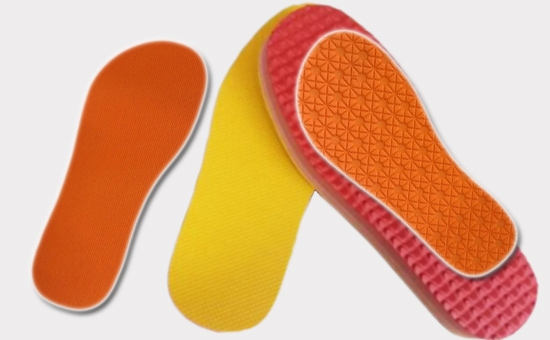
EVA is ethylene-vinyl acetate copolymer, which is a commonly used material for shoe soles and uppers in shoe processing enterprises. EVA foam soles have good moisture absorption, heat resistance, abrasion resistance, weather resistance, and oil resistance, but they are easy to slip when walking in wet places, and the soles are stiff under low temperature conditions, which are caused by their own material defects. With the continuous development and progress of rubber-plastic combination technology, the appropriate use of natural rubber in EVA soles can significantly improve the problems of EVA soles such as slipping, hardening at low temperatures, and the puncture resistance of rubber soles.
1. Control the amount of natural rubber
Reasonable use of natural rubber in EVA soles can significantly improve the comprehensive performance of the soles, but in actual production, the amount of natural rubber is not as much as possible. It is understood that the foaming efficiency of EVA foam soles is closely related to the amount of natural rubber. The foaming rate continues to decrease with the increase in the amount of natural rubber. The increase in the amount of natural rubber and the melt viscosity of the blended material 2LLYY0313 will increase, which will cause foaming. The problem of difficult degassing and uneven foaming of the material, the shrinkage of the bottom of the finished EVA foam significantly increased.
In general, in the production of EVA-natural rubber foam soles, the amount of natural rubber should not exceed 20 parts to ensure that the EVA foam soles are uniformly foamed and reduce the shrinkage of the finished product.
2.EVA-Natural rubber foam sole compounding agent types
Using a small amount of natural rubber in the EVA foam bottom can significantly improve the elasticity and elongation at break of the foam bottom, and the comfort of the foam bottom is significantly improved. When using EVA-natural rubber blending materials to prepare the foam bottom, when rubber product manufacturers choose peroxides such as DCP for vulcanization, the physical and mechanical properties of the blending materials are better; selecting the foaming agent AC foaming can better coordinate the vulcanization speed and development. The relationship between the foaming speed, thereby further improving the foaming efficiency of foamed rubber soles and the degree of foaming uniformity.
Rubber and plastic materials have better performance and lower cost, and are currently widely used. The use of a small amount of natural rubber in EVA foam soles can significantly improve the overall performance of the soles. Butadiene rubber, styrene butadiene rubber, etc. can also be used in the formulation of the foamed sole with EVA as the main material. In actual production, rubber product manufacturers not only need to control the amount of natural rubber and compounding agents in the EVA foam bottom formula, but also need to reasonably control the vulcanization process and foaming process of the sole according to the processing performance of rubber and EVA materials. About the problems in the production and processing of EVA-natural rubber foam soles, I have the opportunity to continue to discuss with you.
Exclusive original article [commercial authorization] reprint, excerpt and excerpt in any form are prohibited without written authorization. Focus on Hongyun rubber: learn the process formula and raw material technology of producing rubber products from recycled rubber to help you reduce costs and increase profits